Dill seed and dill weed are not interchangeable in equal amounts—use 1 teaspoon of dill seed to replace 1 tablespoon of fresh dill weed. This critical substitution ratio prevents flavor disasters in your cooking. Dill seed offers earthy, citrusy notes ideal for pickling and baking, while dill weed provides delicate grassy freshness perfect for fish and salads. Understanding these differences ensures authentic results whether you're making Russian pickles or Scandinavian gravlax.
Table of Contents
- What Exactly Is Dill? (With Visual Identification)
- Cultural Perspectives: Dill's Global Journey
- The Lowdown on Dill Seeds: Flavor Profile & Best Uses
- All About Dill Weed: When to Use Fresh vs Dried
- Head-to-Head: Dill Seed vs Dill Weed Comparison Chart
- Cooking Tips: 5 Pro Techniques for Perfect Results
- Frequently Asked Questions (and Verified Answers)
- Final Thoughts: Avoiding Common Flavor Mistakes
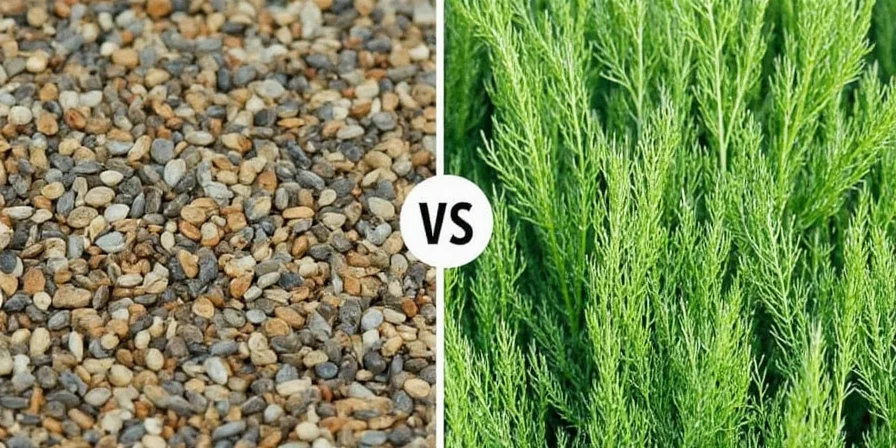
What Exactly Is Dill? (With Visual Identification)
Dill (Anethum graveolens) is an annual herb in the celery family (Apiaceae) with two distinct culinary components. Understanding these visual differences prevents recipe failures:
- Dill weed: The feathery green leaves and stems (harvested before flowering)
- Dill seed: The oval tan-brown seeds (collected after flowering)
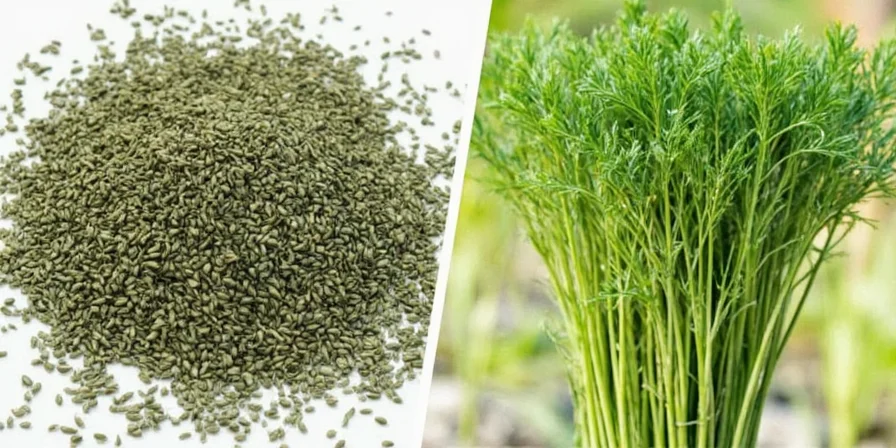
Cultural Perspectives: Dill's Global Journey
Dill's application varies significantly by region, directly impacting whether seed or weed should be used:
- Scandinavia: Fresh dill weed is essential for gravlax (cured salmon), where its bright notes cut through richness
- Russia: Dill seeds dominate in traditional pickled vegetables (solёnye ogurtsy) for earthy depth
- India: Dill seeds (soya) appear in spice blends for lentil dishes, adding subtle warmth
- Mediterranean: Fresh dill weed enhances tzatziki and fish dishes
Why This Matters for Your Cooking
Using the wrong form creates inauthentic results. Russian pickles made with dill weed lack the characteristic earthiness, while Scandinavian gravlax with dill seeds becomes overpowering. Matching regional techniques to your recipe ensures authentic flavor profiles.
The Lowdown on Dill Seeds: Flavor Profile & Best Uses
Dill seeds come from mature fruit of the dill plant, harvested after flowering when green seeds turn tan or brown. They deliver concentrated, complex flavor essential for specific applications.
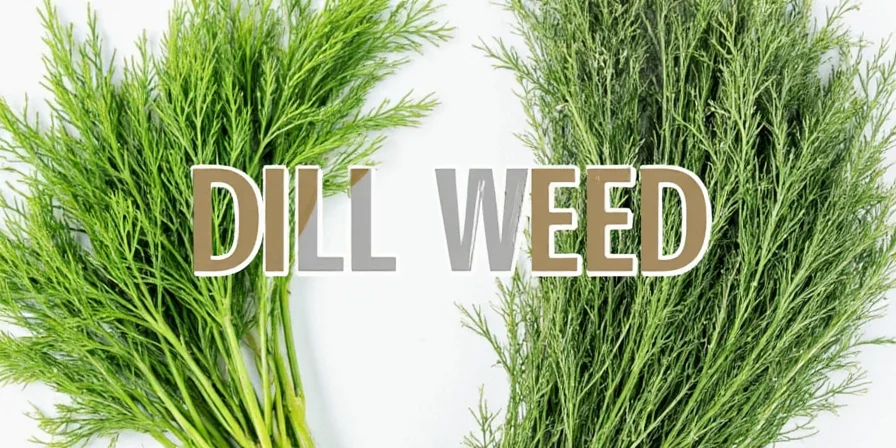
Flavor Profile (With Intensity Rating)
- Intensity: 8/10 (strong, concentrated)
- Bold earthy notes with subtle citrus undertones
- Resembles caraway but less licorice-forward
- Warm finish with mild peppery bite
Top 5 Culinary Uses (With Measurements)
- Pickling: 1 tsp seeds per quart of brine for classic dill pickles
- Bread baking: 1/2 tsp ground seeds per loaf for rye bread
- Meat rubs: 1 tsp crushed seeds + 1/2 tsp garlic powder per pound of meat
- Vegetable ferments: 1/2 tsp seeds per jar for sauerkraut
- Spice blends: 1 tsp seeds in homemade za'atar
All About Dill Weed: When to Use Fresh vs Dried
Dill weed refers to the fresh or dried leaves and stems. Its delicate flavor requires careful handling to maximize culinary impact.
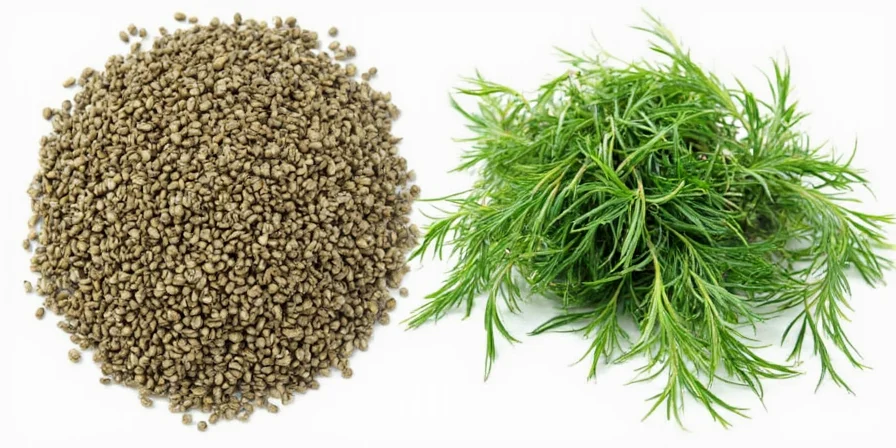
Flavor Profile (With Intensity Rating)
- Intensity: 3/10 (delicate, subtle)
- Fragrant grassy notes with mild sweetness
- Faint anise-like undertones
- Loses flavor quickly with heat exposure
Top 5 Culinary Uses (With Timing Guidance)
- Fish seasoning: 2 tbsp chopped fresh weed per pound of salmon (added 5 minutes before serving)
- Cold salads: 3 tbsp fresh weed per serving of German potato salad
- Dips and dressings: 1/4 cup fresh weed in 1 cup sour cream dip
- Grain bowls: 2 tbsp fresh weed per serving (added after cooking)
- Herb vinegars: 1/2 cup fresh weed per cup of vinegar (steeped 2 weeks)
Head-to-Head: Dill Seed vs Dill Weed Comparison Chart
| Feature | Dill Seed | Dill Weed |
|---|---|---|
| Part of Plant | Mature seed pods | Leaves and stems |
| Flavor Intensity | 8/10 (strong) | 3/10 (delicate) |
| Flavor Profile | Earthy, citrusy, warm finish | Grassy, fresh, mild anise notes |
| Substitution Ratio | 1 tsp seeds = 1 tbsp fresh weed | 1 tbsp fresh weed = 1 tsp seeds |
| Heat Tolerance | High (add early in cooking) | Low (add at end of cooking) |
| Storage Duration | 4 years (sealed, dark place) | 6 months (dried), 1 week (fresh) |
| Top Culinary Match | Pickling, baking, hearty dishes | Fish, cold dishes, creamy sauces |
Cooking Tips: 5 Pro Techniques for Perfect Results
Master these techniques to avoid common dill-related cooking mistakes:
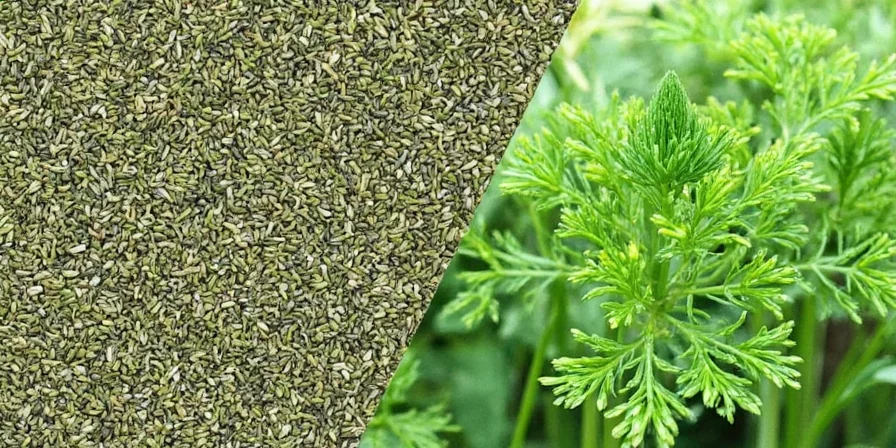
Dill Seed Pro Tips
- Toast for Depth: Dry-toast seeds in skillet 2-3 minutes until fragrant before grinding—enhances complexity in spice blends
- Whole vs Ground: Use whole seeds for pickling (better texture control), ground for rubs and baking
- Seed Infusion: Steep 1 tsp seeds in warm cream 15 minutes for dill-flavored sauces
Dill Weed Pro Tips
- Preserve Freshness: Store fresh dill upright in glass with 1" water, covered loosely with bag (lasts 10-14 days)
- Freeze Properly: Chop weed, mix with olive oil, freeze in ice cube trays for cooking-ready portions
- Timing Matters: Add fresh weed in last 2-3 minutes of cooking to preserve flavor and color
Frequently Asked Questions (and Verified Answers)
What's the exact substitution ratio between dill seed and dill weed?
The precise substitution is 1 teaspoon of dill seed for every 1 tablespoon of fresh dill weed. For dried dill weed, use 2 teaspoons to replace 1 teaspoon of dill seed. This accounts for both flavor intensity differences and moisture content.
Why do my pickles lack authentic flavor even with dill?
Traditional dill pickles require dill seeds—not weed—for proper flavor development. Russian-style pickles use 1 tsp seeds per quart plus 1 fresh dill head. Adding seeds early in the brine process allows their essential oils to properly infuse.
Can I use dill weed instead of dill seed in bread recipes?
Not recommended. Bread recipes call for dill seed because its robust flavor withstands baking temperatures. Dill weed would burn and become bitter. For dill bread, use 1-2 tsp crushed seeds per loaf—never substitute equal amounts of weed.
How do I identify real dill seed versus similar spices?
Authentic dill seeds are oval (2-3mm long), light brown, with 5 distinct ridges. They smell citrusy-earthy when crushed. Similar-looking fennel seeds are longer (4-6mm) with stronger licorice aroma. Caraway is curved with deeper ridges.
Do dill seed and dill weed have different shelf lives?
Yes. Properly stored dill seeds maintain potency for 3-4 years in airtight containers away from light. Fresh dill weed lasts 7-10 days refrigerated; dried weed retains flavor for 4-6 months. Test freshness by rubbing seeds—fresh ones release aromatic oils.
Final Thoughts: Avoiding Common Flavor Mistakes
Mistaking dill seed for dill weed (or vice versa) is one of the most common cooking errors that ruins otherwise perfect dishes. Remember this golden rule: dill seed provides bold, earthy foundation flavors that stand up to cooking, while dill weed offers delicate finishing notes best added at the end.
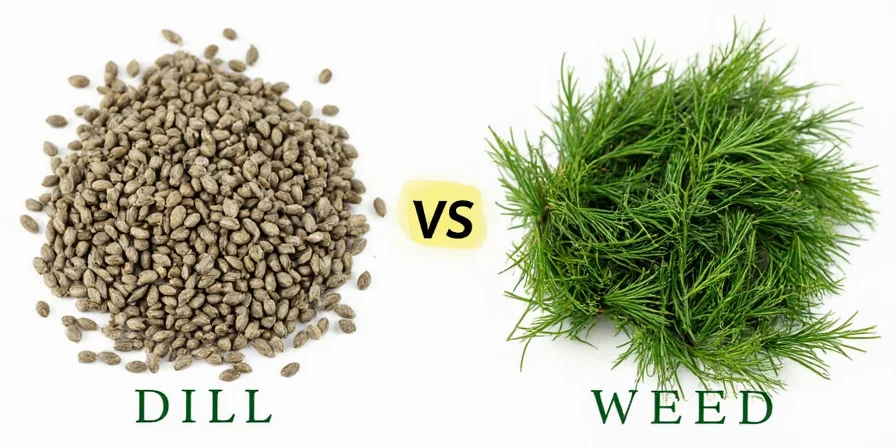
When following recipes from specific culinary traditions, match their dill form to achieve authentic results. Russian and Eastern European recipes typically specify seeds for pickling, while Scandinavian and Mediterranean dishes call for fresh weed with fish. Keeping this distinction in mind transforms your cooking from good to genuinely authentic.
Pro Tip: Keep both forms in your pantry—seeds for year-round pickling and baking, fresh weed (or high-quality dried) for finishing dishes. Freeze excess fresh dill weed in oil for winter cooking when fresh herbs are scarce.

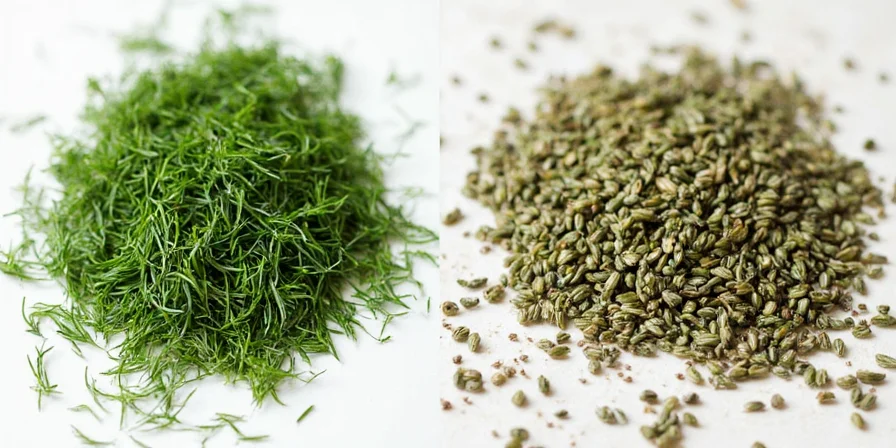









 浙公网安备
33010002000092号
浙公网安备
33010002000092号 浙B2-20120091-4
浙B2-20120091-4